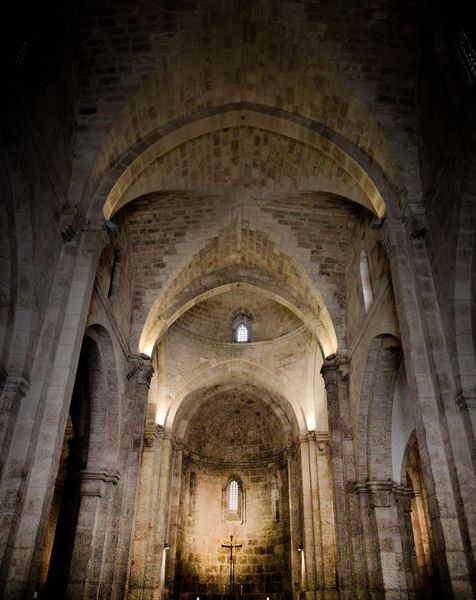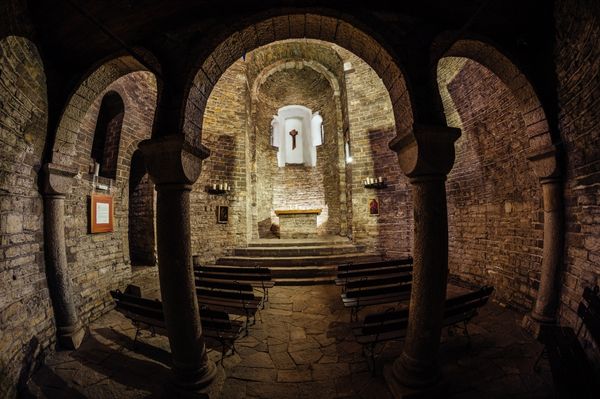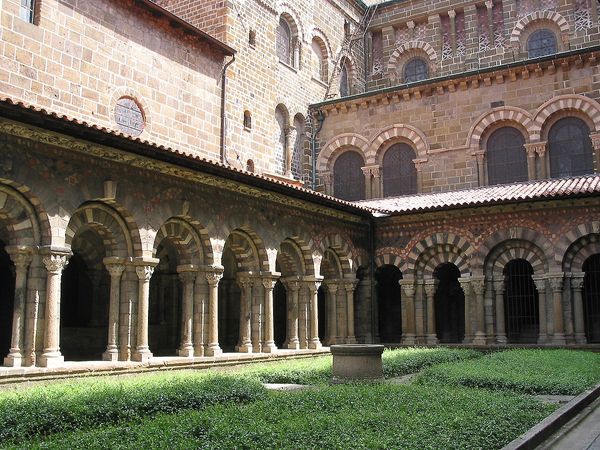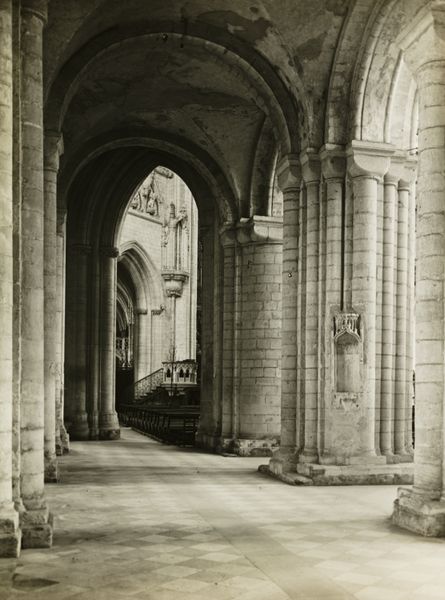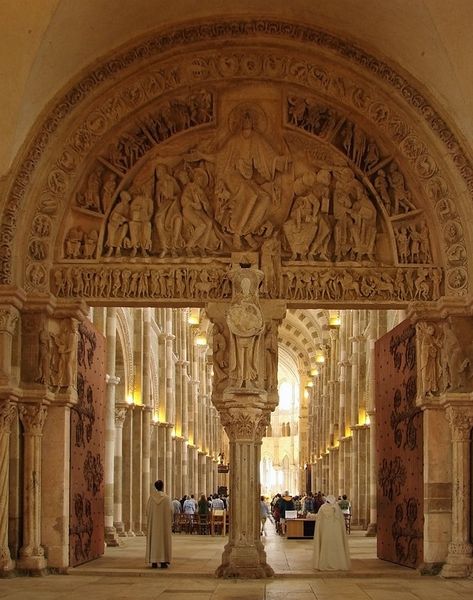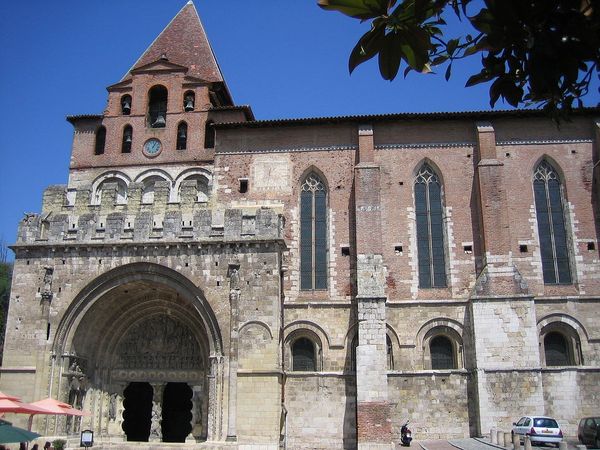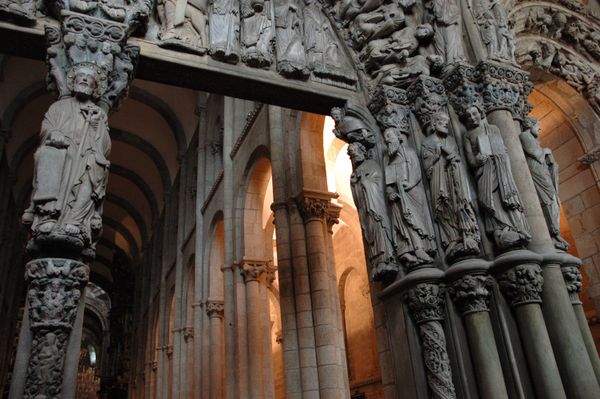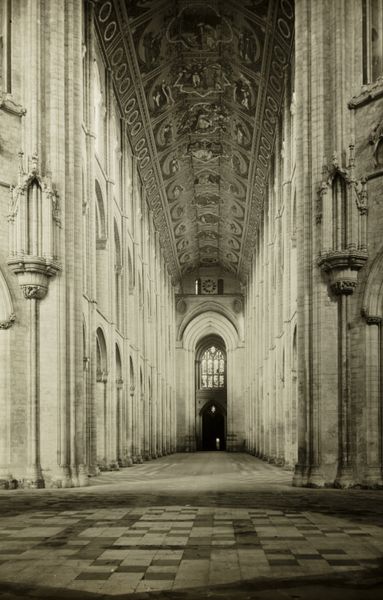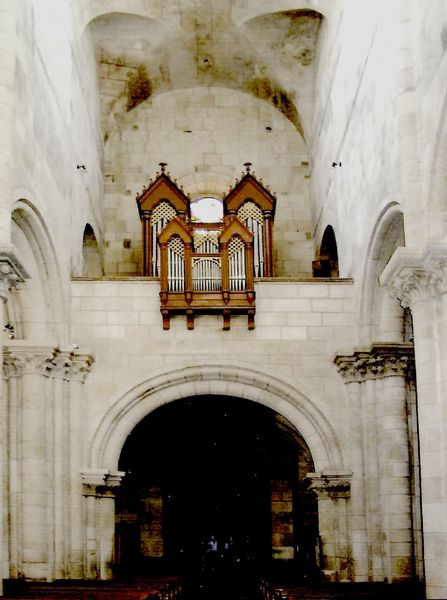
architecture
#
architectural landscape
#
landscape
#
arch
#
architecture
Copyright: Public domain
Curator: The piece we are viewing is a photograph of the Zsámbék Premontre Monastery Church in Hungary, dating back to around 1220. It's a stark architectural landscape, capturing the skeletal remains of Romanesque structure. Editor: The initial impression is undeniably melancholic. The ruinous state, the open sky where a roof should be – it speaks of time’s relentless march, doesn't it? There’s a dialogue between absence and presence, between what was and what remains. Curator: Precisely. Consider the means of production; the initial construction involved quarrying local stone, the labor of skilled masons… Their efforts shaped this monument, which now, ironically, points to the transience of material endeavor itself. Editor: But let’s think beyond just materiality. This wasn't simply an act of construction; it was the articulation of power. Monasteries like this held immense social and political influence. What narratives did this architecture seek to impose? Who benefited from its creation and use? Curator: We can investigate the material traces of social hierarchy through the allocation of resources towards elaborate details. Look at the remaining carved capitals – exquisite work signifying status and wealth materialized through dedicated artisanship. Editor: And how have these structures been consumed, altered, and perhaps repurposed over centuries? The monastery witnessed changes in power, the Reformation, and ultimately its partial destruction by earthquakes. What's its symbolic role in contemporary Hungarian identity, given its layered history? Curator: That resonates with the tension between decay and persistence. The photograph itself adds another layer. Notice the angle, shooting up from ground level; it emphasizes height while at the same time underscoring the ruinous context in the foreground, giving prominence to new plant growth that persists still in the grounds today. Editor: It really compels us to acknowledge the past not as some immutable entity, but as something always in flux, still actively shaping the present. What stories would we uncover if those stones could speak of the human hands and ambitions that crafted them, the prayers uttered within these crumbling walls? Curator: The question becomes how these remnants challenge conventional divisions between labor and legacy—craft and cultural expression. And in that, we see beyond architectural relics towards vibrant symbols resonating through different dimensions of production. Editor: Right, thinking through both materials and impact, we reveal hidden elements in architectural representation to consider this image less a record of past greatness than as something with ongoing political relevance—a prompt for new dialogues regarding power, meaning and memory.
Comments
No comments
Be the first to comment and join the conversation on the ultimate creative platform.
